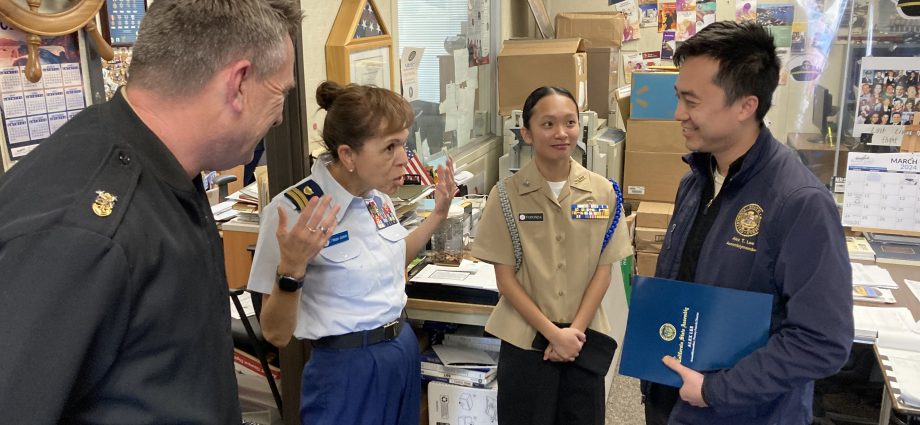The MUSD board agreed to maintain the Navy Junior Reserve Oficers Training Corps (NJROTC) program despite expected budgetary cuts during the Feb. 13 board meeting.
The U.S. Navy has announced it will cease to fund MHS’s NJROTC program if the program fails to reach the 100 student enrollment threshold before the next school year begins, Superintendent Cheryl Jordan said at the Feb. 13 MUSD board meeting.
To counteract the NAVY’s expected fund withdrawal, community organizations have stepped up to collect money to fund the program in the short term, MUSD Board President Minh Ngo said in an email.
“However, for long term success, student enrollment in the program must increase,” Ngo said.
The program currently has 52 students enrolled, which means it must double its enrollment numbers before the school year begins in order to retain Navy funding, Jordan said at the board meeting.
“It is not fair to Lieutenant Jackson who has been there (at the program) for the last seven years by herself,” assistant superintendent Kelly-Yip Chuan said. “It is a pathway for our students.”
At the February board meeting, Jordan proposed removing one full-time equivalent (FTE) from the program, saving the district approximately $100,000. The proposed cut in spending is a result of recent cost management measures by the board in regards to the district’s deficit spending, Jordan announced at the meeting.
After deliberation, the board agreed to “defer any action on the NJROTC department for a year to allow the program to raise its enrollment and to give time to the district to explore other funding opportunities,” Ngo said at the meeting.
For the past few years, enrollment numbers have remained stagnant at the program, assistant principal Damon James said at the meeting.
“Before the pandemic, there never was a recruitment problem,” Lieutenant Margie Jackson said.
The recruitment process in the NJROTC program is student-led, Jackson said. Students go out and try to recruit students utilizing communication skills they learned within the program, she added.
Students “learned from watching each other year after year,” Jackson said. “Usually, we had 17 or 18 seniors who graduated and had stayed the whole four years, so they were masters at it.”
However, once the pandemic began, recruitment numbers were impacted due to online learning, Jackson said. Once students came back, the few who were in the program did not have the example of experienced students who could guide them, which was something the program had relied on for years, she said.
“All that we had was the students that the counselor put in the program,” Jackson said.
The NJROTC program needs both instructors to operate smoothly, Master Chief Jimmy Whitney said. Jackson has been “living in her office” the last couple of years in order to run the program, he said.
“If we get it to 100, we will definitely need both instructors to teach just the curriculum,” Whitney said.
“Ever since Master Chief Whitney got here, we’ve noticed a significant load off of Lieutenant’s (Jackson’s) back because she has a second instructor there to help her out,” junior cadet Akshat Paliwal said.
Whitney is also capable of helping students further their prospects due to his connections with members of the Naval Academy, Paliwal said.
“Without him, there’s no way we can get back to those greater numbers that we’re trying to look for,” sophomore cadet Isaac Garcia said. “He’s made a very big difference even in the short time he’s been here.”
The program is demanding for both students and instructors, Whitney said. It involves students completing 1300 hours of community service hours a year, and requires the instructors’ attention throughout the week, he said.
Students “learn how to work in teams; they understand collaboration, decision making, and all those things that are important for something to be successful,” Jackson said.
Santa Clara County Supervisor Otto Lee pledged his support for the program, according to Jordan’s statement at the board meeting.
“I think, with the support of the school, and people getting behind this program, we will get it back to 100 (students enrolled),” Whitney said.
2024-04-05

